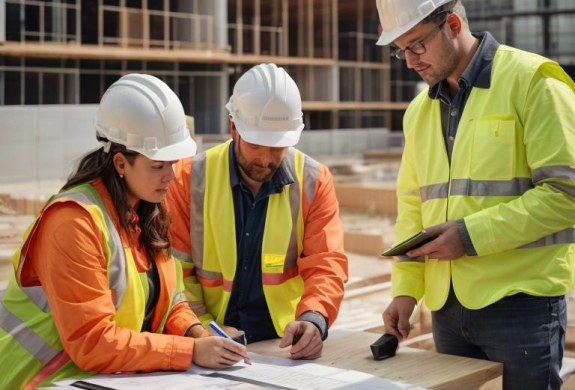Key Strategies for Successful Construction Project Management

Construction is a multifaceted field that combines planning, design, and execution to bring architectural visions to life. Whether you're a contractor, project manager, or homeowner embarking on a construction project, understanding the key elements of successful construction can help ensure a smooth process and a high-quality result.
Key Phases of a Construction Project
Planning and Design
The planning and design phase is the foundation of any construction project. It involves defining the project scope, setting objectives, and creating detailed plans and blueprints. This phase includes:
Site Analysis: Assessing the construction site to understand its suitability, including factors like soil quality, topography, and access.
Design Development: Working with architects and engineers to create detailed designs and specifications.
Permitting: Obtaining the necessary permits and approvals from local authorities.
Pre-Construction
Once the design is finalized, the pre-construction phase prepares for the actual build. This phase involves:
Budgeting: Estimating costs and setting a budget for the project.
Scheduling: Developing a timeline for project milestones and completion.
Procurement: Ordering materials, hiring subcontractors, and securing equipment.
Construction
The construction phase is where the actual building takes place. Key activities include:
Site Preparation: Clearing and preparing the site, including excavation and grading.
Foundation Work: Laying the foundation, which may involve pouring concrete or constructing footings.
Structural Work: Erecting the framework and structural elements of the building.
Systems Installation: Installing essential systems such as plumbing, electrical, and HVAC.
Finishing: Adding finishing touches, including interior and exterior finishes, landscaping, and final inspections.
Post-Construction
The post-construction phase involves finalizing the project and ensuring everything is complete. This phase includes:
Punch List: Identifying and addressing any remaining issues or defects.
Final Inspections: Conducting final inspections to ensure compliance with codes and standards.
Handover: Transferring ownership and documentation to the client or property owner.
Best Practices for Successful Construction Projects
Effective Communication
Clear and ongoing communication between all parties—clients, contractors, subcontractors, and suppliers—is crucial. Regular meetings, updates, and transparent communication help prevent misunderstandings and keep the project on track.
Quality Control
Maintaining high standards of quality throughout the construction process is essential. This involves:
Regular Inspections: Conducting regular site inspections to ensure work meets quality standards.
Using Quality Materials: Choosing high-quality materials and ensuring they are used correctly.
Training and Supervision: Providing proper training for workers and supervising their work to ensure adherence to standards.
Risk Management
Identifying and managing risks can help prevent delays and additional costs. Effective risk management involves:
Risk Assessment: Identifying potential risks, such as weather delays or supply chain issues.
Mitigation Strategies: Developing strategies to mitigate identified risks and having contingency plans in place.
Insurance: Securing appropriate insurance coverage to protect against potential liabilities.
Budget and Time Management
Staying within budget and on schedule is critical for project success. Strategies include:
Detailed Planning: Creating detailed budgets and schedules, and regularly reviewing and updating them.
Monitoring Progress: Tracking progress against the plan and making adjustments as needed.
Controlling Costs: Identifying and controlling costs to avoid overruns.
Safety
Ensuring safety on the construction site is paramount. This includes:
Safety Protocols: Implementing and following safety protocols to protect workers and visitors.
Training: Providing safety training for all personnel.
Safety Equipment: Ensuring that all necessary safety equipment is used and maintained.
Conclusion
Successful construction projects rely on careful planning, effective communication, and diligent execution. By understanding the essential phases and best practices, stakeholders can navigate the complexities of construction and achieve successful outcomes. Whether you're building a new home, renovating an existing structure, or managing a commercial project, applying these principles along with effective construction estimating services can lead to a smoother process and a more satisfying result.